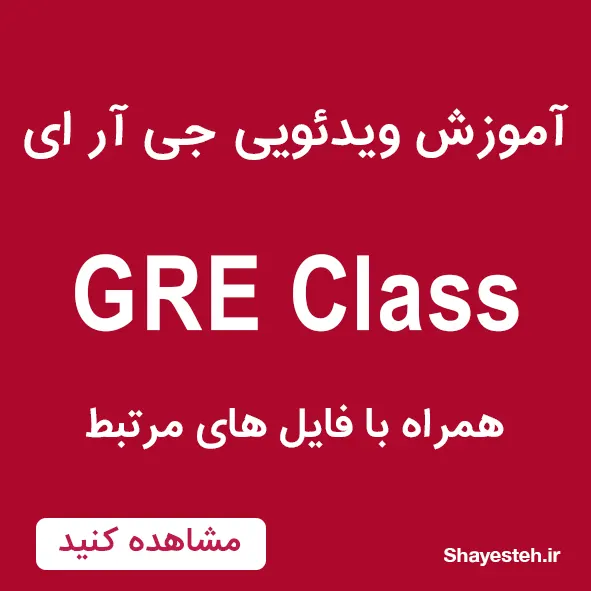در صورتی که اشکالی در ترجمه می بینید می توانید از طریق شماره زیر در واتساپ نظرات خود را برای ما بفرستید
09331464034
Topic:
When Stanley Park first opened, it was the largest, most heavily used public park in town. It is still the largest park, but it is no longer heavily used. Video cameras mounted in the park's parking lots last month revealed the park's drop in popularity: the recordings showed an average of only 50 cars per day. In contrast, tiny Carlton Park in the heart of the business district is visited by more than 150 people on a typical weekday. An obvious difference is that Carlton Park, unlike Stanley Park, provides ample seating. Thus, if Stanley Park is ever to be as popular with our citizens as Carlton Park, the town will obviously need to provide more benches, thereby converting some of the unused open areas into spaces suitable for socializing.
Write a response in which you examine the stated and/or unstated assumptions of the argument. Be sure to explain how the argument depends on these assumptions and what the implications are for the argument if the assumptions prove unwarranted.
هنگامی که پارک استنلی برای اولین بار افتتاح شد، این بزرگترین پارک عمومی بود که بیشترین استفاده را در شهر داشت. هنوز هم بزرگترین پارک است، اما دیگر خیلی مورد استفاده قرار نمی گیرد. دوربین های ویدئویی نصب شده در پارکینگ های پارک ماه گذشته کاهش محبوبیت پارک را آشکار کرد: این ضبط ها نشان می دهد که به طور میانگین روزانه فقط 50 ماشین در روز وجود دارد. در مقابل، بیش از 150 نفر در روزهای هفته معمولی از پارک کوچک کارلتون در قلب منطقه تجاری بازدید می کنند. یک تفاوت آشکار این است که پارک کارلتون، برخلاف پارک استنلی، صندلی های زیادی را فراهم می کند. بنابراین، اگر پارک استنلی به اندازه پارک کارلتون در بین شهروندان ما محبوب باشد، بدیهی است که شهر باید نیمکت های بیشتری تهیه کند و در نتیجه برخی از مناطق باز استفاده نشده را به فضاهای مناسب برای معاشرت تبدیل کند.
پاسخی بنویسید که در آن مفروضات بیان شده و / یا بی دلیل را بررسی می کنید. حتماً توضیح دهید که چگونه استدلال به این فرضیات بستگی دارد و در صورت عدم اثبات فرضیات، چه برداشتی از استدلال خواهد شد.
Strategies
Regardless of the approach you take, consider the following steps:
a) Is there an alternative explanation for the events in question that can invalidate, either in whole or in part, the explanation given in the passage?
b) How can I break the argument into its component parts to understand how they create the whole argument?
c) Can I identify the line of reasoning used to create the argument?
d) What does the author of the argument assume to be true for the argument to be true?
e) Does the line of reasoning validate the conclusion?
f) Can I imagine an example that refutes any or several of the statements in the argument?
g) Am I able to evaluate the argument based on the quality of the facts and reasons presented in it?
Based on your responses to all or some of these questions, you must present a well-developed evaluation of the argument. You should take brief notes when you identify the arguments claims, assumptions, and conclusion. Jot down as many alternative explanations as you can along with additional evidence that might support or refute the claims in the argument. Finally, list the changes in the argument that would make the reasoning more solid. It is more important to be specific than it is to have a long list of evidence and examples.
In developing your response, you are instructed to examine the stated and/or unstated assumptions of the argument, explain how the argument depends on these assumptions, and what the implications are for the argument if the assumptions prove unwarranted.
Assumptions:
a) All users of Stanley Park arrive by car
b) Each car parked at Stanley Park represents a single user of the park
c) Stanley Park will draw the same population as Carlton Park
d) Park users are attracted primarily by the number of benches available for seating
e) The best measurement of Stanley Park’s usage is measured by weekday usage.
Evidence needed to evaluate the argument:
a) Location of Stanley Park relative to the business district.
b) The number of cars parked in the lot for Carlton Park (or, does Carlton Park have a lot at all)
c) The number of people who typically arrive in each car at Stanley Park
d) Information that shows the current 50 cars per day in the lot represents a decline from a time in the past when there were more cars
e) Information about weekend usage at Stanley Park
f) Information from users of Stanley Park on the interest in additional seating.
g) Information on how open spaces at Stanley Park are currently used.
After completing these steps, you should have enough material to write your analysis. Remember that you are not creating a position of your own; you are evaluating the strengths and weaknesses of the existing argument. You do not have to include all of the points that you have created in your prewriting. In fact, during the process of drafting your analysis, other ideas may come to mind, and, if they strengthen your analysis, you should include them.
Sample 1:
Based on the number of cars observed parked in the parking lot of Stanley Park on weekdays, the writer makes the argument that usage of Stanley Park has declined, and that installing more seating in the open spaces of the park will lead to an increase in the number of users. Both the claim, that the number of users has declined, and the solution, that additional seating will increase usage, are flawed, and are based on unsupported assumptions.
Initially, the writer assumes, first, that all users of the park arrive by car, and that every car parked in the parking lot represents a single user of the park. If each car represents a group of users, for example, a family with six children, the estimated number based solely on the number of cars is significantly lower than the actual number of people in the park. If people travel to the park by means other than cars, for example, by walking or bicycling, there is additional attendance that is not accounted for by simply counting cars in the parking lots.
Furthermore, the writer is counting only the cars in the Stanley Park lot on weekdays in order to make a comparison to the usage of Carlton. Perhaps Carlton Park is a small park located near the business district and is frequented by workers on weekdays, while Stanley Park is a suburban park that sees most of its usership on weekends. It could be that Stanley Park’s parking lots overflow on weekends with families attending little league games, picnicking, or hiking through the park, while Carlton Park is completely empty on Saturday and Sunday. Without information on both weekday and weekend parking lot usage for parking lots for both parks, there is no way to make an accurate comparison.
In suggesting additional seating will increase users in the Stanley Park the writer assumes that park visitors use the two parks for the same reasons. It may be that Carlton Park offers ample seating convenient to offices and businesses in the center of the city, and is popular with workers taking lunch breaks, who look for seating. Stanley Park, however, might be more popular with groups who want to play organized sports such as baseball or soccer, and therefore prefer large open spaces. In that case, putting seating in the open spaces would likely decrease the number of people who use the park as there would be less space for playing these types of games.
Finally, even if all of the writer’s observations are accurate, he has not shown that there is a decline in attendance at Stanley Park, only that the attendance at Stanley Park is less than that at Carlton Park. In order to show a decline at Stanley Park the writer would need to include information about past observations of the Stanley Park parking lots, indicating the average number of cars observed in the past to compare to the average number of cars currently observed.
Before going forward with any plan to alter the seating or availability of open spaces in Stanley Park the writer should request additional information. For example, he should learn more about usage of Stanley Park throughout the week, how the open spaces are utilized, and find out how users of the park reach the park. There is currently not enough information to make an informed decision.
Sample 2:
The arguer recommends that Stanley Park can be made as popular as Carlton Park if the town provides more benches in Stanley Park in order to utilize the open spaces available in the park. The arguer presents two facts in support of the recommendation made. The first fact is that there was an average of 50 cars coming to Stanley Park per day as per the recordings of the mounted video cameras. The arguer compares this with the number of people visiting Carlton Park which is more than 150 per day. The second fact is that Carlton Park provides more seating than Stanley Park. However, the argument fails to convince the reader that the recommendation made is justified due to lack of additional information.
Firstly, it is not necessary that all the visitors coming to Stanley Park come in cars. There may be a sizeable number of citizens who come to the park on two wheelers or who walk down to the park. Moreover, it is likely that the parking lot is a little away from Stanley Park and hence, most people find it convenient to park their cars somewhere else. There is no mention of the fact that the mounted video cameras are fixed or rotating. If the cameras are fixed, then it is likely that there are corners of the parking lot that are not covered by the video cameras. Moreover, a car can accommodate up to six to seven people depending on the type of car it is. Therefore, the number of cars parked in the parking lot cannot be regarded as the only indication for claiming that there has been a drop in the number of visitors to the park. The argument can be substantiated to an extent if it includes additional information that can prove that Stanley Park is no longer heavily used.
Secondly, the location of Carlton Park may be a compelling reason for a substantial number of daily visitors to the park. As it is located in the heart of the business district, it is likely that the park is easily accessible by most people. There is no mention of the location of Stanley Park. Since Stanley Park is the largest park, it is possible that it might be situated away from the town. Therefore, the distance involved in traveling is probably keeping the people from visiting it frequently. Additionally, the arguer does not provide the statistics related to the occupancy of the benches at Carlton Park in order to prove that they are being utilized by the people. It is likely that the benches remain unoccupied as the people are busy moving around the park. In view of the above, it is likely that providing more benches in Stanley Park may not affect its popularity at all as the arguer fails to prove that the benches in Carlton Park are being used by the people.
There may be several reasons for a park’s popularity. The availability of a hygienically clean rest room within the park, swings for children, a counter for refreshments, a small gym and the permission to bring in pets are all factors that significantly contribute to the popularity of a park. Factors like the entry fee for the park and the ambience of the park including well maintained lawns play important roles in increasing the popularity of a park. Therefore, unless the arguer addresses all such factors, the reader cannot be convinced that providing benches in Stanley Park is more than adequate for increasing the popularity of the park.
نظرات کاربران
هنوز نظری درج نشده است!


